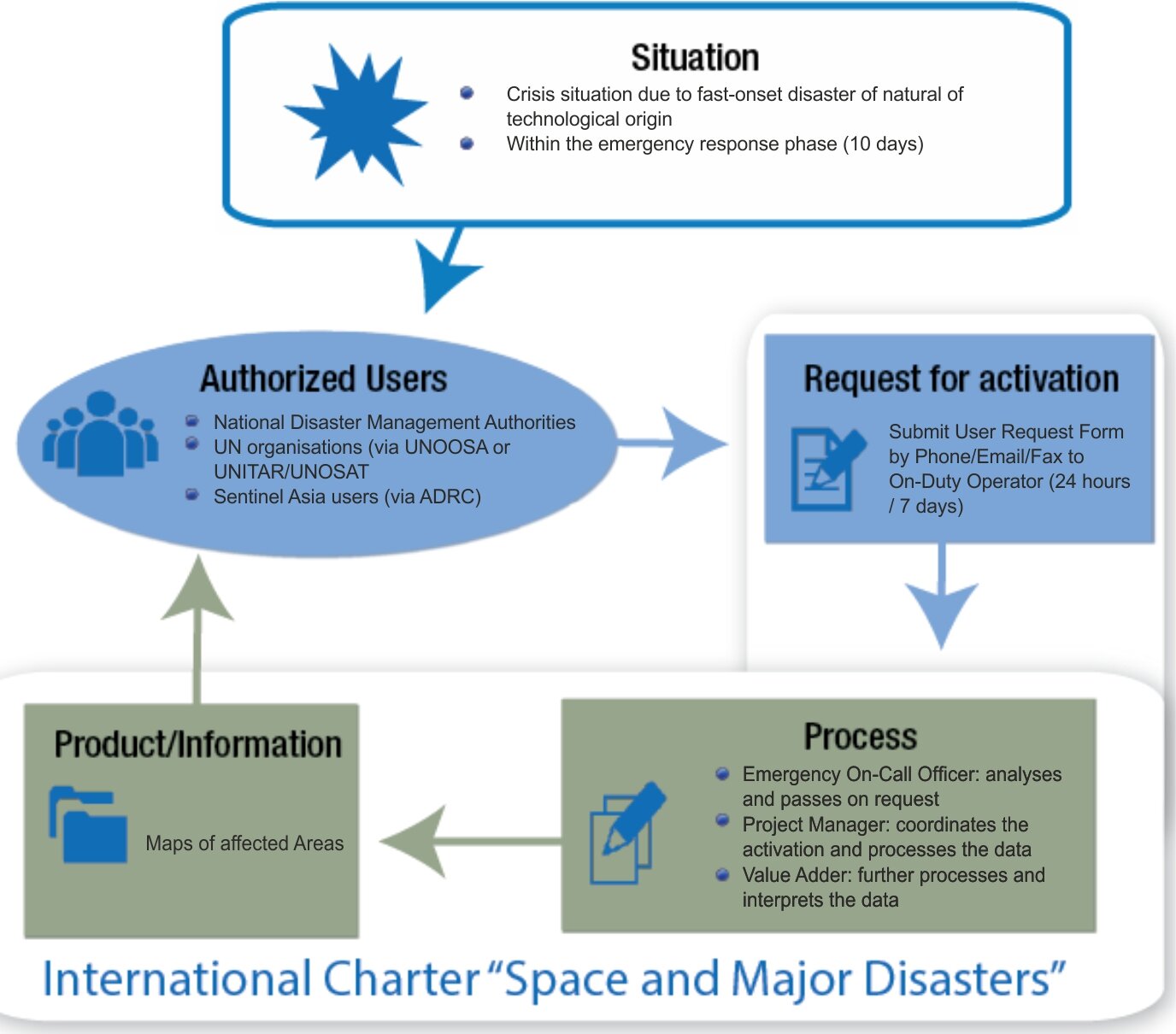International Charter on ‘Space and Major Disasters’ | 27 Jul 2019
India, by virtue of being a member of the International Charter ‘Space and Major Disasters’ has received a satellite data related to the Assam floods from other member nations including France, Russia and China.
- Whenever there is a natural or man-made disaster, the National Remote Sensing Center (NRSC) and member space agencies of other countries which are a part of the International Charter Space and Major Disasters can activate the platform.
- National Remote Sensing Center represents the Indian Space Research Organisation (ISRO) as a member of the charter which has been set up under the UN-SPIDER (United Nations Platform for Space-based Information for Disaster Management and Emergency Response).
The International Charter ‘Space and Major Disasters’
- World’s first coordinated multi-satellite operational setup for emergency response Introduced at Space Assembly (UNISPACE III) in 1999 and is Operational since Nov 1, 2000.
Purpose
- It is an International Agreement among Space Agencies to support with space-based data and information for relief efforts in the emergencies caused by major disasters, on humanitarian ground at no cost.
Need
- No single space agency can provide imaging capability to meet the spatial and temporal requirements of different types of disasters.
- Different space sensors (Thermal, Microwave, Optical) are required for different disasters (Fire, Floods, EQ).
- Hence the need for a global system for disaster management, supported by multi-satellite and multi-imaging capabilities.
Members
- Currently 16 global space agencies Including India’s ISRO are it’s members.
- The members cooperate on a voluntary basis.
- UN-SPIDER and UNITAR (United Nations Institute for Training and Research is a dedicated training arm of the United Nations system) are not formal members of the mechanism, but are authorized to request the activation of the mechanism on behalf of UN agencies, in countries affected by disasters.
Disasters Types Supported
- Charter addresses both:
- Natural disasters like floods, earthquakes, forest fires, landslides, tsunamis, ocean storms, volcanic eruptions.
- Man made disasters like oil spills and industrial accidents.
Mechanism
- Direct activation: Authorized Users (civil protection agencies, governmental relief organizations, or other authorities with a mandate related to disaster management) are able to request the activation of the Charter to support emergencies in their own country.
- Activation via an Authorized User on behalf of a user from another country without AU: Authorized Users can access the charter to request support for a disaster in another country with which they cooperate for relief purposes.
- Activation via the UN for UN users: The Charter has an agreement with UN OOSA (Vienna) and UNITAR/UNOSAT (Geneva) to provide support to UN agencies, may submit requests on behalf of users from the United Nations.
- Activation for Asia Pacific users via Sentinel Asia: Sentinel Asia is a regional collaboration for satellite based emergency response in Asia Pacific.

